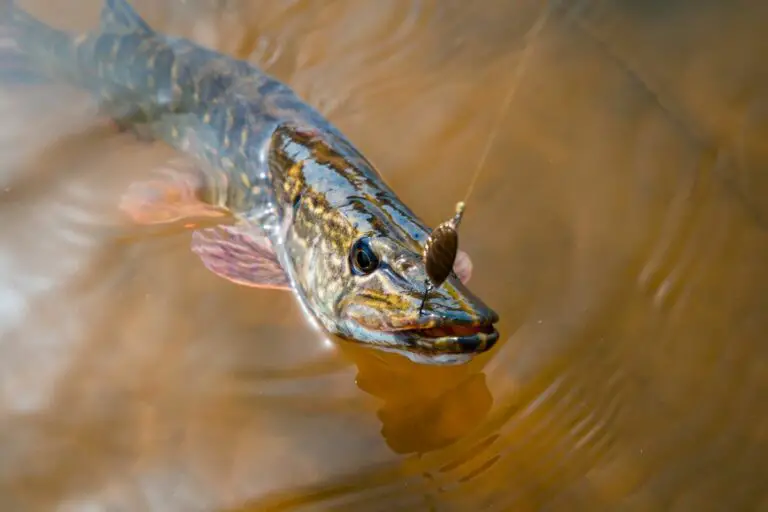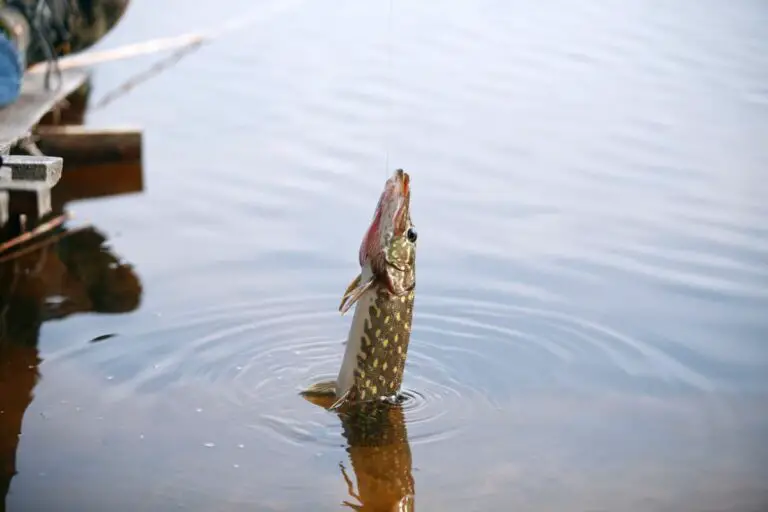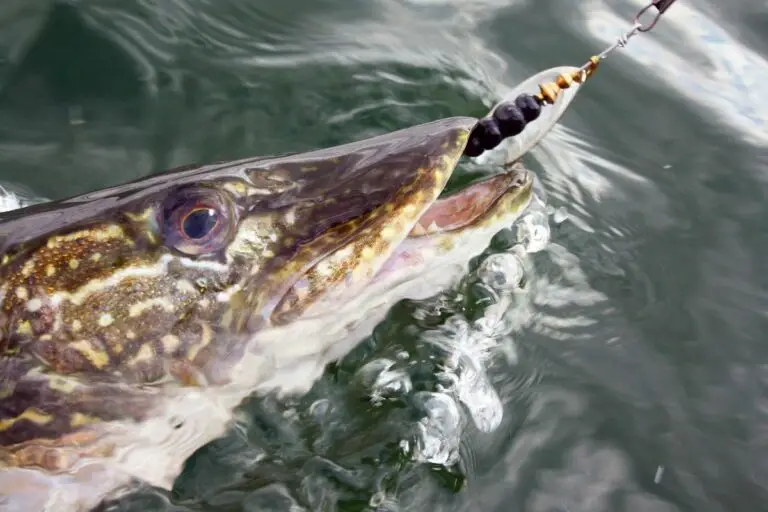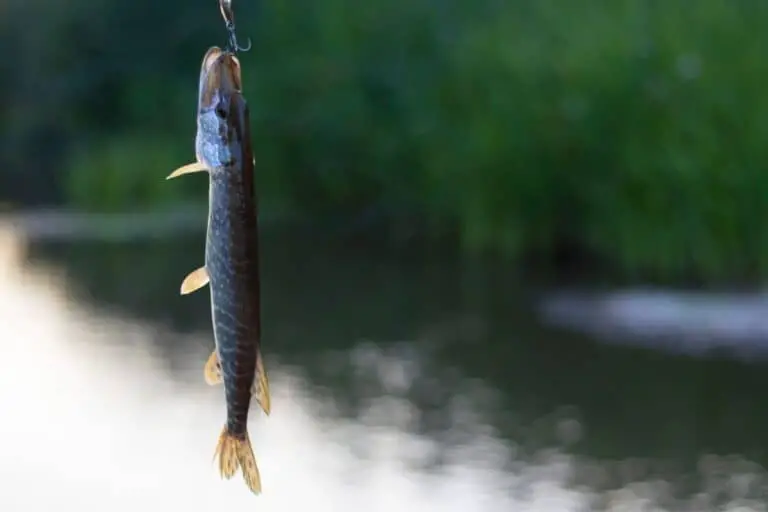Why is Pike So Slimy? and How to Easily Remove Slime from Pike
Slimy fish can be a headache to many anglers as it makes fish hard to grasp. Slime is an essential part of fish survival kits, especially pike, as it serves many functions that help them to survive and adapt to the surrounding environment.
Why is pike so slimy? Pike is so slimy because the slime protects it from fungi, bacteria, pathogens, and parasites that are found in many areas where the pike spends most of its time in. It also helps them from being caught by predators and helps them swim faster.
Read below to know more interesting facts about why pike is so slimy and how to easily remove slime from pike
Table of Contents
What Is Slime?

Fish slime is a substance made of glycol-proteins and produced by the cells in the skin layer. When these proteins combine with water, slime is produced, and it covers the whole skin.
Slime is beneficial to fish in many ways:
- It protects the fish from fungi, bacteria, pathogens, and parasites, and by reducing large amounts of mucus, problems are less likely to happen.
- It allows the fish to escape predators’ grasp. It’ll easily slip away when a predator tries to attack it.
- It allows the fish to swim faster. Slime gives the fish’s body a smooth surface, reducing water drag and resulting in faster movements.
- It helps improve the fish’s internal health.
Some fish produce more slime than others according to the environment they live in to help them adapt. If the fish lives in a habitat where predators are around all the time, its cells will produce more of these glycol proteins. Same as when the fish habitat has a lot of rocky areas or areas with high pathogen concentrations, the amount of slime produced will protect their skin on so many levels.
Why Is Pike So Slimy?
As mentioned before, the amount of slime produced by the fish cells depends on how much it needs it. So, the pike is so slimy because slime helps them survive and adapt to their environment more than other fish.
Pike natural habitat includes a lot of sticks, weeds, and downed logs that can easily scratch or hurt the pike skin. The slime here works as a smooth shield for the skin to prevent cuts and scratches. Even when a scratch takes place, the slime protects the injured areas from infection by fungi, bacteria, pathogens, and parasites.
Also, Pike are natural predators that spend most of their time hiding in ambush, waiting to attack their prey. Most of these areas have higher rates of pathogen populations and concentrations that can infect the pike skin.
Since pike are natural predators that hide to attack, their bodies are built for speed. Slime boosts pike speed by working as a smooth surface on the skin that reduces the water drag and helps them move more flexibly.
You can check my guide on how to find pike in rivers where they tend to hide. You can also check this post for some tips for river pike fishing.
Even though pike is considered one of the top predators of freshwater, chances aren’t nonexistent when it comes to being attacked by another predator. The slimy surface allows pike to escape predators’ grasp more efficiently.
Pike may not be the anglers’ favorite to catch because of their extra slimy bodies, which makes them hard to catch and land, but that’s exactly how it functions and why it’s produced in the first place.
Pro-tip: Rubber gloves with textured grip help you better grasp the pike even when it’s extremely slimy. It also protects your hand from the risk of being bitten by sharp teeth.
I recommend the gloves from BIG WORM FISHING. They are super affordable, and for the price, there really aren’t any better-made gloves out there.

You should also check out my guide on handling tiger muskies safely, as it has some important guidelines for handling any large fish that will be just as applicable to pike.
How To Remove Slime from Pike?

Anglers have different ways to remove slime from pike. Some even let it roll on sand or grass when they’re fishing from shore. But these ways won’t always be a great help; I have the simplest, most effective tips on how to completely remove slime from pike.
- Prepare a big bucket and clean it very well.
- Fill its ⅓ with hot-to-warm clean water.
- Add about half a gallon (1 liter) of vinegar.
- Place the pike in the bucket and keep stirring around until the slime falls off.
- Wipe it with a cotton towel to make sure there are no traces left.
Alternative way:
- Bring a bucket with you on the boat if you’re willing to keep a pike.
- Put the pike in the clean bucket right after it’s dead.
- Cover the pike in salt all over.
- Leave it till you get home; you’ll see that the cleaning process is much easier.
Some people use paper when cleaning a pike, and they confirmed that it is effective when it comes to slime removal. The slime sticks to the paper and makes the fillet process a little easier. Other people tried filleting and cleaning the pike when it’s still frozen, the frost may be annoying, but the slime is way more controllable.
How to Clean Pike?
Cleaning Pike is similar to how you clean a muskie, so if you’re familiar with the latter, you have no problem. The cleaning process can be harder due to the fish’s Y-shaped bones, but if you follow this simple guide, you’ll be able to do it faster and more efficiently.
After you remove the slime, here’s how you can clean pike:
- Get a fillet knife. You can get a special filleting kit on Amazon that can enhance your experience.
- Remove the head with a vertical cut just behind the gill plate.
- Cut along the backbone with a horizontal cut ending at the tail.
- Cut ahead of the dorsal fin by another vertical cut.
- Work your knife inside the fish parallel to the backbone in the middle
- Slice along with the Y-shaped bones.
- Turn the pike over and repeat the previous procedure to slice the other side.
- Cut the flesh around the backbone horizontally. It’s going to be easier by now.
- Cut the piece with the pelvic fins in half and get rid of the pelvic girdle.
- Remove all skin from all parts you’re done filleting.
Now that you know how to clean pike, you are ready for your next fishing adventure, but before you go, why not check out my recommended fly fishing lines here. These are the ones that are guaranteed to bring in the best results out of the countless lines I’ve tested over the years, so make sure to check them out.
Related Questions
How Do You Get Slime off Any Fish?
You can get slime off fish by soaking it in warm water and vinegar. There are some alternative ways, like using papers that stick to the fish skin and make the cleaning process easier. You can also try wiping the fish with a cotton towel if the slide is not too much.
How Do You Clean Northern Pike?
To clean northern pike, you need to remove the skin, cut the head and tail, work your way inside the fish parallel to its backbone, and slice along the Y-shaped bones. Make sure to cut the flesh around the backbone horizontally, as it’s going to be easier.
What Does Pike Taste Like?
Pike has a fishy sweet taste. It’s similar to how muskies taste and can be close to the sweetness of walleye. Many people enjoy the taste of pike in different cooking ways. When dipped in butter, its taste is similar to what lobster tastes like as well.
Get Started with Pike Fishing
- Learn what are the best pike baits here
- Check out the best braided fishing lines for pike here
- Start getting results with these budget baitcasting reels
- learn how to fish for pike in the winter in my guide to cold weather pike fishing here.
Helpful Resources
Northern Pike Facts and Nutritional Value
Pike fishing – How to catch Pike
If you like this article, please share it or pin it, you can find the share buttons below. We will really appreciate it ❤️

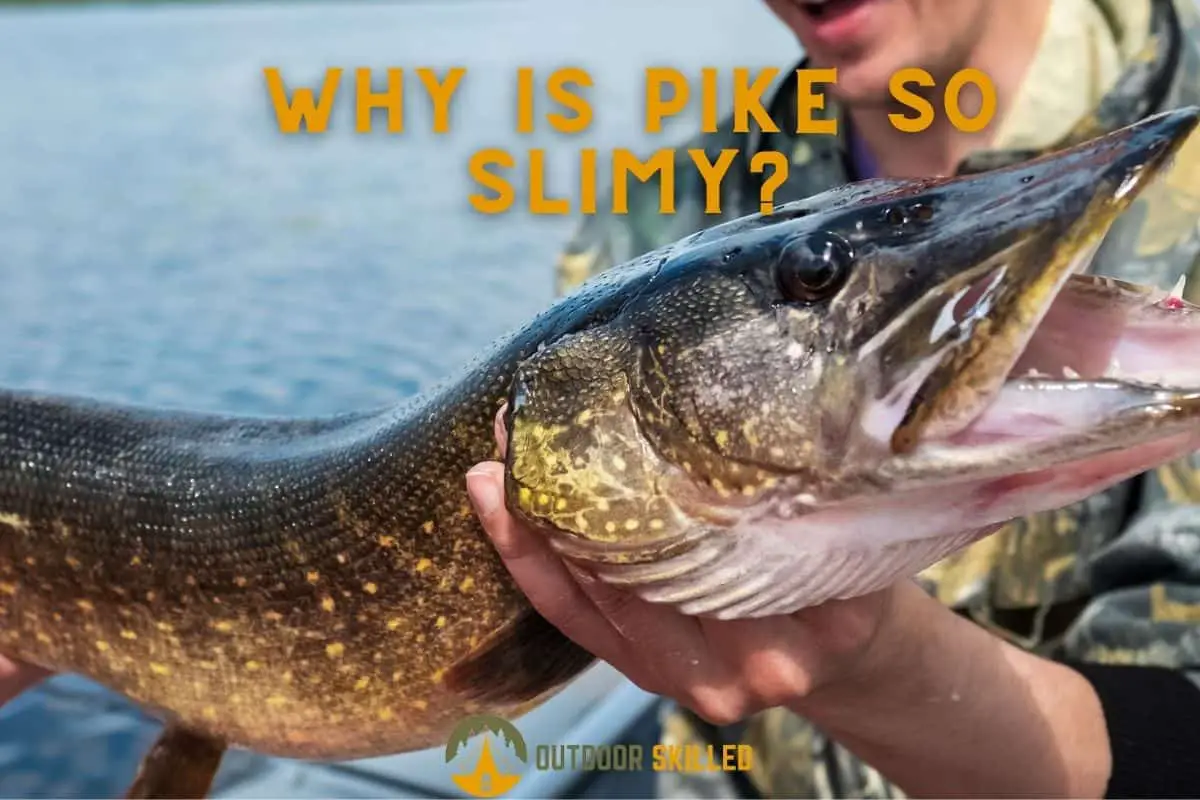
![Do Northern Pike Eat Bluegill? A Simple Guide [With Video]](https://outdoorskilled.com/wp-content/uploads/2021/10/northern-pike-fish-swimming-768x512.jpg)
